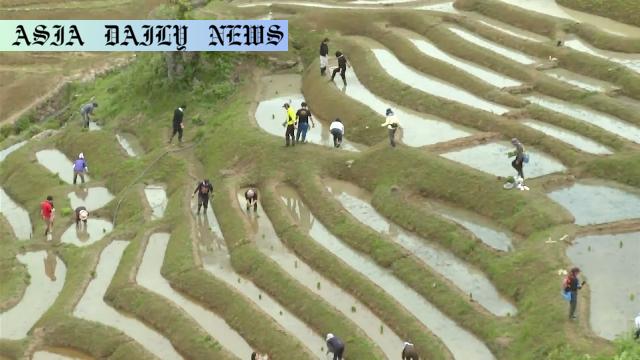Rice Planting: Farmers and volunteers begin planting Koshihikari rice on the picturesque Shiroyone Senmaida terraces post-disaster.
Rice Planting efforts in Japan’s Noto Peninsula draw volunteers.
About 250 of the 1,000 paddies have been restored post-disaster.
Harvesting of Koshihikari variety planned for September.
Local communities and volunteers are working to repair and rejuvenate the damaged rice terraces.

Introduction: Reviving Shiroyone Senmaida
The Shiroyone Senmaida rice terraces in Wajima City, Ishikawa Prefecture, are a breathtaking marvel of human ingenuity and nature’s beauty, with over 1,000 small terraced paddies overlooking the Sea of Japan. Recently, however, this cultural and agricultural landmark faced devastating challenges, including a powerful earthquake and torrential downpours. These disasters resulted in significant damage to the terraced fields, threatening not only local livelihoods but also an enduring symbol of Japan’s agrarian heritage.
The restoration of Shiroyone Senmaida has brought about a heartening collaboration between local farmers and volunteers from various parts of Japan. On Saturday, an impressive group of about 100 volunteers joined the farmers to plant rice seedlings of the Koshihikari variety in about 250 restored paddies. This moment represented the human spirit’s resilience and determination to rebuild after nature’s fury.
The Efforts to Restore Shiroyone Senmaida
Since the devastating earthquake and rainfalls of last year, a dedicated group of local farmers has been working tirelessly to repair the damage and ready the paddies for planting once again. Their efforts reflect both the significance of these terraces as an agricultural resource and the deep community pride in preserving this heritage site.
The collaboration with volunteers marked a turning point in these efforts. Volunteers from various prefectures came forward not only with hands ready to work but also with hearts filled with empathy for a disaster-affected community. A 44-year-old woman from Nara Prefecture remarked that participating in this initiative was her way of extending support to those recovering from the calamity.
Future Plans: Sustaining the Legacy
Despite the progress made, Shirao Tomokazu, the head of the group managing Shiroyone Senmaida, emphasized that much work remains. The goal is to eventually restore all 1,000 terraced paddies to their original state, ensuring they remain an iconic part of Japan’s cultural and agricultural landscape. To this end, the group plans to continue fostering volunteer involvement, encouraging both residents and tourists alike to contribute to the restoration effort.
Looking ahead, the current planting season is set to culminate in a September harvest of the Koshihikari rice variety. By then, the transformation of Shiroyone Senmaida from a disaster-stricken site into a thriving agricultural domain will serve as a testament to the power of community collaboration and resilience.
Commentary
Preserving Cultural Heritage Through Community Efforts
The story of Shiroyone Senmaida’s restoration is a touching example of how communities and individuals can come together to protect and preserve cultural heritage even in the face of devastation. The terraced rice fields are not just an agricultural asset for the region but also symbolize a traditional way of life that has sustained generations. It is inspiring to see farmers and volunteers from across Japan joining forces to breathe life back into these iconic paddies.
Role of Volunteers in Rebuilding After Disasters
Volunteers play an indispensable role in disaster recovery efforts, as demonstrated in this initiative at Shiroyone Senmaida. Their participation is not limited to physical labor but also represents an emotional connection and support for the affected communities. The solidarity shown by volunteers, such as those from Nara Prefecture, embodies the best aspects of humanity – kindness, empathy, and selflessness.
Sustaining the Legacy
As work progresses at Shiroyone Senmaida, the efforts underline the importance of safeguarding cultural and natural sites for future generations. Restoring 250 paddies is just the beginning, with significant work still needed to restore all 1,000 fields. However, with government backing, community engagement, and the dedication of groups like Shirao Tomokazu’s, the vision of a fully restored Shiroyone Senmaida appears achievable.
This inspiring story serves as a reminder of the importance of resilience, collaboration, and the preservation of cultural heritage. It encourages us all to invest in and value the traditions, history, and natural beauty of places like Shiroyone Senmaida, which hold deep significance for local communities and the world at large.


